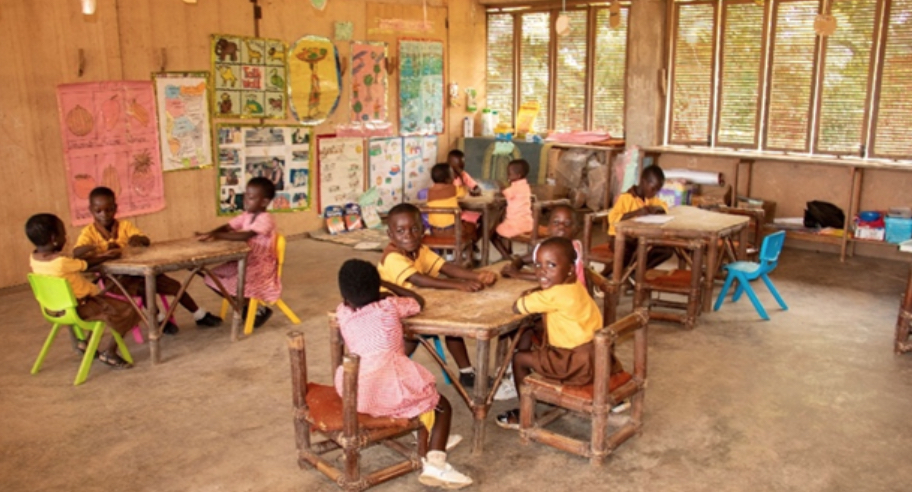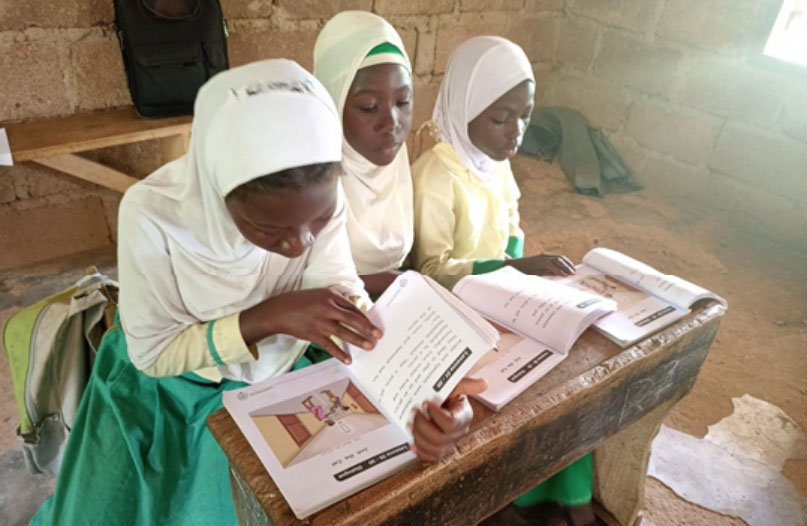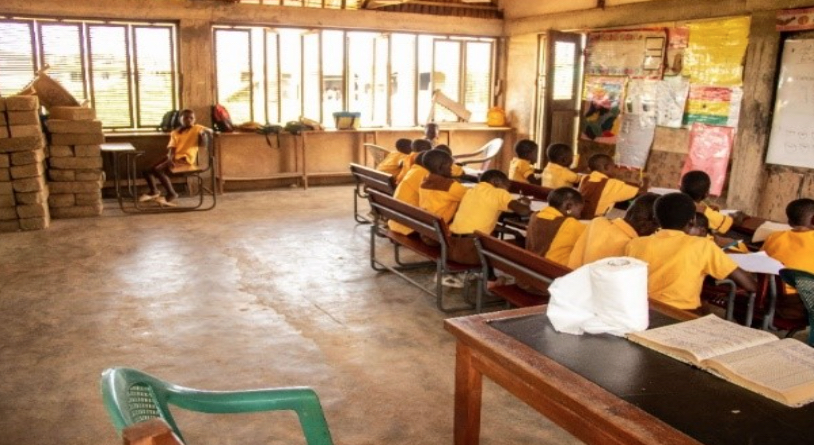by the Institute for Education Planning and Administration, University of Cape Coast, Ghana
Building upon the Save Our Future White Paper’s recommendation to make education more inclusive, engaging, and adaptive (IEA), the Innovative Pedagogies Project (IPP) was launched to create greater awareness, political will, and action toward adopting IEA and playful pedagogies at the primary school level in three African countries – Ghana, Kenya, and Rwanda – as well as globally. The project was spearheaded by the Education Commission with funding from the LEGO Foundation.
The IPP country partners in Ghana are the Institute for Educational Planning and Administration (IEPA) working with the Ministry of Education (MoE) and the Ghana Education Service (GES).
To guide the development of the IPP work, we grounded our approach on the evidence-based framework of Universal Design for Learning (UDL), which acknowledges the great variability in how children learn and how teaching and teachers must account for this. We also included a focus on social and emotional learning.
The project defines IEA pedagogies as follows:
Inclusive – all children have the right to learn, including learners with disabilities, girls and boys, ethnic and religious minorities, and other applicable groups.
Engaging – learning should be exciting and fun, so that as learners are motivated to learn, they are more successful.
Adaptive – teaching and learning need to be aligned with learners’ developmental needs, rather than a one-size-fits-all approach.
The research
Following the first policy dialogue in April 2022, and the desk review of relevant literature, rapid research was conducted in May 2022. The rapid research sought to assess to what extent IEA pedagogies are implemented in Ghana’s education system and identify gaps in selected primary schools across the country. A cross-sectional survey on IEA pedagogies involving key stakeholders (school heads, teachers, school management committee members, and parents) was undertaken. School and classroom observations were conducted in 24 public primary schools as well as interviews with 120 individuals selected from 12 districts in six regions of the country.
Our findings
What we found in the lower primary classrooms…
In most classrooms, teachers were ready and prepared for their lessons with their lesson notes and resources that were available (Figure 1). In most cases, (98%), the language of lesson delivery matched the home language of the learners.
 Figure 1: Teacher readiness
Figure 1: Teacher readiness
Some teachers used multiple means of representation of concepts. For instance, 54% of the teachers were observed to have provided learners with the opportunity to use real objects to make connections to concepts while 52% used charts, graphs, and pictures to represent concepts. (Figure 2)

 Figure 2: Use of multiple means of representation of concepts
Figure 2: Use of multiple means of representation of concepts
The majority of the classrooms (90%) did not have adequate teaching and learning resources such as writing materials, textbooks, furniture, and story books which made it challenging to practice IEA pedagogies (Figure 3). In some schools in deprived districts, children were found writing on the floor in the classroom (Figure 4)
However, resourceful teachers create flashcards for phonics activities, integrate small group instruction across subjects, and re-use locally available (and free) manipulatives such as bottle caps and straws to support students in numeracy activities.
 Figure 3: Inadequate resources
Figure 3: Inadequate resources

Figure 4: Writing on the classroom floor

A few classrooms did have a 1:1 ratio of textbooks, and adequate resources in the classroom to support IEA pedagogies. Only 10% of the lessons observed had textbooks available and in usable condition for all learners. Of the teaching and learning resources available, most are low-level technology devices used in classrooms to support teaching and learning. Access to high-tech and mid-tech devices is low.
 Adequate textbooks
Adequate textbooks
 To support IEA pedagogy practice, learners should be given support through multiple approaches. Sixty nine percent (69%) of teachers were found to adopt strategies such as small-group work, working in pairs, and peer engagement. Regarding multiple means of engagement, 94% of the teachers observed used pedagogies that motivated and engaged learners. This was mainly through teachers’ use of songs or dances (72%) to engage learners and teachers linking instructional content of lessons to learners’ personal experiences (73%).
To support IEA pedagogy practice, learners should be given support through multiple approaches. Sixty nine percent (69%) of teachers were found to adopt strategies such as small-group work, working in pairs, and peer engagement. Regarding multiple means of engagement, 94% of the teachers observed used pedagogies that motivated and engaged learners. This was mainly through teachers’ use of songs or dances (72%) to engage learners and teachers linking instructional content of lessons to learners’ personal experiences (73%).
Group work
In most cases, the majority of teachers (94%) provided opportunities for all the learners to participate in lessons, and gave reinforcement to learner responses.
Learners were however limited in terms of their exposure to multiple means of action and expression. Less than 20% of classrooms provided learners with such opportunities for multiple means of action and expression of learning. The study also showed only 16% of the classrooms observed had learners who were able to choose the type of text or story to read, 19% offered learners the opportunity to choose to work in pairs or individually, and only 15% of classrooms provided learners with the opportunity to choose the problems to work on.
The study also showed that teachers lack adequate competencies in IEA-related pedagogies. Although the majority had some pre-service training on IEA, there was limited continuous professional training, coaching, mentoring, and peer teaching to build up their competencies in IEA teaching practices. There were also cases of some teachers neglecting some learners with disabilities due to inadequate skills or knowledge on what to do.
 An isolated child with Special Education Needs (SEN) in an integrated classroom
An isolated child with Special Education Needs (SEN) in an integrated classroom
Lessons learned
- There is teacher readiness for IEA pedagogies practice
- Although Ghana has policies for developing a breadth of skills and inclusive pedagogies with a focus on universal design for learning, the level of knowledge about childhood disability (categories, causes, prevention, assessment, and support, etc.) at classroom levels is limited
- There is inadequate timely allocation of teaching and learning resources to support the implementation of IEA pedagogies in most schools
- Few teachers have the requisite competencies to create and manage an enabling classroom environment for all learners
- There is limited use of teaching models that promote IEA pedagogies in pre- and lower- primary classrooms
- In terms of prevailing models of teaching, teachers’ practice mostly reflects multiple means of representation (how to receive information/content) and engagement (how best to motivate students to learn) but less on multiple means of action and expression (how best to express knowledge of what they learned).
Moving forward
As a final step in IPP’s first phase, Ghana formulated a national action plan to boost the use of IEA pedagogies in consultation with multiple stakeholders including ministry officials, local government officials, and teachers.
Ghana has identified three main objectives within three levels – classroom, school, and systems – each with multiple time-bound and measurable activities. For instance, the plan includes commitments to create a pool of national, regional, and district IEA training officers, to ensure 80% of teachers in pre- and lower-primary schools have access to teaching and learning resources for implementation of IEA pedagogies. A community resource database and resource map for supporting IEA pedagogies will also be created. This plan has been costed in coordination with the Ministry of Education, and we are eager to put this plan into practice to improve learning outcomes for Ghana’s children and youth.
